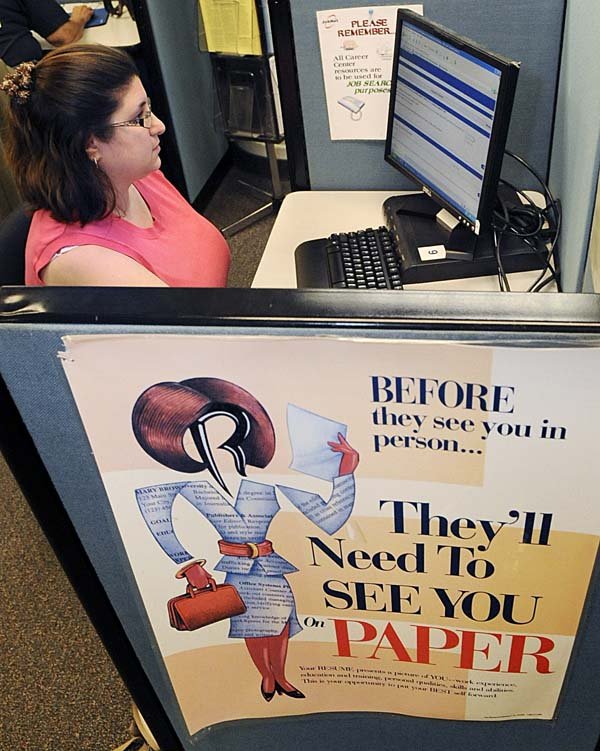WASHINGTON — The number of newly laid-off workers seeking unemployment benefits fell for the third straight week, evidence that layoffs are continuing to ease in the earliest stages of an economic recovery.
The Labor Department said Thursday that initial claims for unemployment insurance dropped to a seasonally adjusted 530,000 from an upwardly revised 551,000 the previous week. Wall Street economists expected claims to rise by 5,000, according to a survey by Thomson Reuters.
The nation's unemployment rate in August rose to 9.7 percent. Arkansas' unemployment rate fell to 7.1 percent in August from 7.4 percent in July.
Fewer layoffs "would be an important sign of improvement ... lessening the critical threat to consumer spending- and to the overall economy - represented by falling employment," Pierre Ellis, an economist at Decision Economics, wrote in a note to clients.
The Federal Reserve said Wednesday that spending"remains constrained by ongoing job losses," tight credit and falling home values. But consumer spending, which makes up 70 percent of the U.S. economy, could improve as workers feel more secure about their jobs.
The four-week average of jobless claims, which smoothes out fluctuations, dropped to 553,500. That's the lowest since late January, though still far above the 325,000 weekly claims typical in a healthy economy.
Economists closely watch initial claims, which are considered a gauge of layoffs and an indication of companies' willingness to hire new workers.
The four-week average has fallen by about 100,000 since reaching a peak for the current recession in early April. Economists say initial claims below 400,000 would be a signal that employers are adding to the net total of jobs.
The number of people continuing to claim benefits for more than a week dropped 123,000 to a seasonally adjusted 6.14 million.
But when federal emergency programs are included, the total number of jobless-benefits recipients was about 9 million in the week that ended Sept. 5, down slightly from the previous week. Congress has added up to 53 extra weeks of benefits on top of the 26 typically provided by the states. The House this week approved legislation that would add another 13 weeks in highunemployment states.
The large number of people remaining on the rolls shows unemployed workers are having a hard time finding new jobs.
Most analysts expect the economy, bolstered by government stimulus efforts, to grow at a healthy clip in the current July-September quarter, technically ending the recession. But many economists also agree with Fed Chairman Ben Bernanke, who said earlier this month that growth isn't expected to be strong enough to reduce the jobless rate for some time.
The Fed said Wednesday that economic activity "has picked up," and the central bank kept the interest rate it controls at its record low of nearly zero.
The recession, which began in December 2007 and is the worst since the 1930s, has eliminated a net total of 6.9 million jobs.
More job cuts were announced this month. Health insurer WellPoint Inc. said this week that it may eliminate more positions to become more efficient, though the company didn't provide details.
Business, Pages 31, 32 on 09/25/2009

